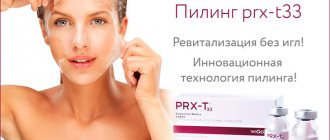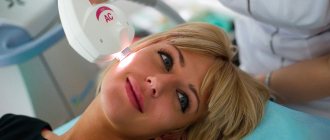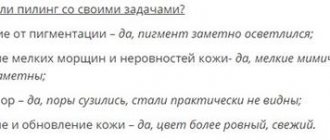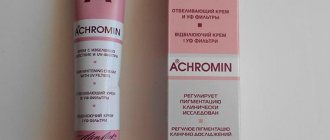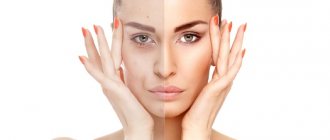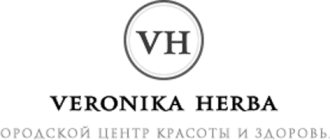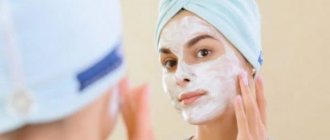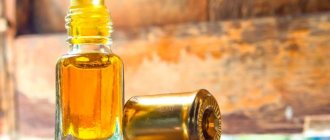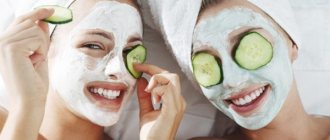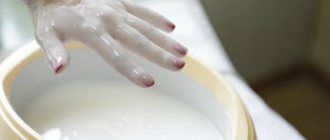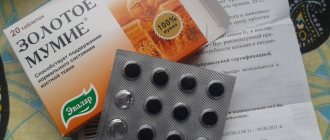Hearing the name of this substance, most of us imagine something incomprehensible and hardly worth attention; a thoughtful user will assume its medicinal purpose, and the owner of a healthy adventurism will want to understand the subject and its relationship to the topic of beauty and youth. We're talking about the freshwater sponge, also known as the badyaga and Spongilla.
In folk hospitals and pharmacies, dried and crushed bodyaga took the place of a remedy for bruises and bruises , due to its powerful absorbent effect. And even earlier, in 1842, the popular Russian publication “Friend of Health” told its readers about a natural remedy that peasant women use: freshwater collected from rivers, dried and crushed, then rubbed with it on the places where blush is needed.
The magazine explains that the skin turns pink not from the dye, but from the irritating action of microscopic spines. Theater historians claim that the bodyagu was often used by actors, and it was among them that the expression “to make a bodyagu” appeared.
Now that the right of this silicon sponge to be among cosmetic products has been proven, let’s try to find out the opinion and details of its use, beneficial properties and possible contraindications.
The source of information is a forum of cosmetologists practicing in different countries.
Relic of the past
Many professionals working with modern cosmetics consider bodyagi powder inconvenient to use and inappropriate next to effective (and expensive) products from reputable brands.
According to indications
There is a category of cosmetologists who skillfully combine in their work old, proven means and the achievements of modern cosmetic science. They use bodyagu in cases where it is ideal and can solve the problem without causing harm.
Miracle component
Bodyaga is an absolutely natural substance. Before its “development” in cosmetology, it was successfully used for the treatment and prevention of radiculitis, rheumatism and arthritis. Even earlier, the healing and anti-inflammatory properties of this component were identified. Bodyaga, sold in pharmacies in the form of a cream, even now dissolves bruises, hematomas, and scars.
In essence, it is an algae from the freshwater sponge family (a colony of coelenterate living organisms). Characterized by an unpleasant specific odor. May have a greyish, brown, green or light yellow tint.
In medicine and as part of home remedies, bodyaga powder is used to cleanse the skin of acne, pigmentation and stagnant bruises, obtained by grinding dried algae of the same name.
In medical terminology, two names for the same substance coexist equally well - “badaga” and “badaga”. They are absolutely identical in composition and purpose.
A hair mask with colorless henna will help quickly restore the health of your curls.
Badyaga
Recipes for face masks made from coffee grounds are presented here. A carrot face mask will help quickly improve the health of your dermis.
Strong irritant
Upon contact with the epidermis, the algae can lead to serious irritation, so it is extremely important to test for tolerance to the drug before adding it to face masks. A decoction of chamomile, warm or frozen, will help relieve irritation. But the benefits and harms of ice for the face should also be checked individually.
Usually, to do this, moisten a cotton pad with a small amount of the prepared mixture or diluted bodyaga powder and wipe the area of skin on the outer bend of the elbow or wrist. But on the forums you can find information that in the absence of redness and burning in the “experimental” areas, a negative reaction immediately appears on the face.
Therefore, when using a mixture based on bodyaga for the first time, it is recommended to apply it to the skin pointwise, and only after “accepting” the product, leave it on the entire face with the exception of the area around the eyes and mouth.
The drug is for external use only! If the product gets into your eyes or mucous membranes, rinse them immediately with plenty of running water.
Find recipes for oatmeal face masks here.
SPA ritual for pennies
Read the article on how to properly use and prepare polysorb face masks.
Benefits for the face
Silica forms the basis of bodyagi. It is an excellent scrubbing agent and has a beneficial effect on damaged skin that has lost its elasticity. This component at the cellular level activates the production of elastin and collagen, which are necessary to maintain the youth of the epidermis.
The very arrangement of silica in bodyaga is unique: it is a network of needles fastened together by spongin, a natural protein that soothes inflammatory processes and resolves tumors.
In addition to silica and spongin, the composition contains:
- calcium carbonate and phosphorus salts;
- organic substances.
The principle of action of the powder is the reaction of skin tissue to irritation caused by the impact of flint needles on the epidermis. This, in turn, leads to stimulation of blood circulation and other biological processes.
Under the influence of bodyaga, tissues produce substances that act as catalysts for healing processes.
In the past, bodyagi powder was used to replace blush. The redness caused small hemorrhages, which were caused by rubbing microscopic silica needles into the skin.
An inexpensive rice face mask will provide a noticeable lifting effect.
"Sunlight"
Nourish and restore the skin – flax seed face mask.
Properties of bodyagi
Particles of crushed silicon sponge penetrate the upper layer of the epidermis, activate blood circulation and cell respiration. Using a mask with bodyaga
- dries out the skin
- promotes the resorption of congestion and reduces inflammation
- a course of several procedures leads to exfoliation of the top layer.
There are several ways to use Spongilla powder; it is used in the form of masks and rubs. The last method of application is abrasive mechanical peeling.
Up
Homemade mask recipes
Bodyaga is sometimes called “the remedy from grandma’s chest,” and this is partly true. Based on this component, more than one generation of women has developed face masks against blackheads and sagging.
For rosacea and other vascular diseases, such masks are prohibited!
With peroxide
A good exfoliating effect and removal of acne marks can be achieved by mixing bodyaga powder with hydrogen peroxide (3%). The mass is mixed until a homogeneous consistency.
The product is rubbed into the skin along massage lines only after the components react. After a quarter of an hour, wash off with warm water.
Treatment is carried out once a week until characteristic peeling of the skin appears, indicating recovery. After which there is no need for manipulations at all or a break is taken for at least 6 months.
With hydrogen peroxide
Universal
To even out tone, whiten age spots, rejuvenate and eliminate fine lines and wrinkles, use algae powder diluted with hot water. The consistency should resemble mush.
Apply the mask in thin layers, using smooth movements, without rubbing. Leave for 10 minutes.
With clay
A mask made of black or white cosmetic clay and base in a 2:1 ratio helps against acne and pigmentation. The ingredients are thoroughly mixed and filled with mineral water.
The effect will appear faster if you add a few drops of tea tree oil to the mixture. Apply the product pointwise to the affected areas, in some cases it can be applied to the entire face. Leave for a maximum of 30 minutes.
With boric acid solution
To prepare a homemade acne remedy, you will need 1 tsp. boric acid diluted in a glass of water. For the mask you will not need the entire volume obtained, but this way you will be able to achieve the desired percentage of the solution.
Mix the base into the prepared boric acid solution until it reaches the consistency of sour cream. The mass is heated in a water bath or in a microwave oven, applied with a cotton pad and left for 20 minutes. After washing, remove moisture from the face with a towel, without wiping, so as not to irritate the skin even more, and lightly powder.
The course of treatment averages 7 procedures. After such a mask, the skin remains red for some time.
An orange miracle for achieving perfection - a pumpkin face mask.
With peroxide
Find out the benefits of a sour cream face mask here.
Benefits for the skin
Badyagi peeling has the following effects on the epidermis:
- cleanses acne, comedones and pimples;
- eliminates puffiness and dark circles under the eyes;
- removes expression lines and reduces the depth of age wrinkles;
- tightens the skin, restores its elasticity and tone;
- reduces the number of freckles or age spots;
- evens out the complexion.
Peeling with bodyaga can be used to cleanse any type of epidermis - regular procedures will help maintain youth for many years.
The peeling procedure is reminiscent of coral or laser polishing - after removing dead cells through irritation, the dermis is renewed.
Features of application
If used incorrectly, it can cause serious harm, including skin burns.
- The product should not be swallowed, inhaled (when preparing the mixture, it is better to cover your mouth and nose with a bandage), and apply to the area around the eyes and mouth.
- Apply only to prepared skin.
- Be sure to conduct a tolerance test. For those with sensitive epidermis, it is better to consult a dermatologist and cosmetologist in advance.
- After removing the mask, it is recommended to hold off on applying moisturizing and soothing creams, allowing the skin to rest and breathe a little. To avoid any irritation, it is better to apply a hypoallergenic face cream.
- Mild redness may persist for several hours after the procedure, so it is better to perform it at night or on a weekend.
- After the procedure, you should not be in the sun. If this cannot be avoided, then you need to use a high-quality cream with ultraviolet protection. Therefore, you need to know the rating of the best face creams.
- It is strictly forbidden to keep the product longer than the period specified in the recipe!
- Prohibited for vascular skin diseases, increased facial hair growth, fresh mechanical damage and severe inflammatory processes.
- At the slightest burning sensation, rinse immediately with water.
- The frequency of applications is 1-2 per month.
With chlorhexidine and green clay
A baking soda face mask will help you cope with acne.
Use Cases
Bodyaga peeling is performed according to the principle of a mask. The composition, prepared strictly according to the recipe, is applied to the surface of the face or body, left for 15–20 minutes to act, and washed off with water. This is enough to effectively cleanse the skin. There is no need to rub or massage the skin treated with the product. This can lead to tissue injury.
The simplest option for using the properties of bodyaga is to treat the skin with a special gel from a tube, completely ready for use. The substance is considered safer, because the composition is perfectly coordinated, the gel consistency of the drug is characterized by a delicate effect. The product can also be purchased in pharmacies.
Reviews about the effect
Reviews about this method of treating problematic, sagging and oily skin are contradictory. With individual intolerance to the components, sensitivity and thinness of the skin, as well as violations of the rules for preparing and using masks based on this algae, some women experienced severe allergic reactions and burns.
But if all the nuances were observed, many of them were satisfied with the result:
- Marina: “This product helped me a lot at one time, I got rid of acne, which I suffered from for 3 years. I made it according to a universal recipe.”
- Angela: “I can’t say that I like bodyaga, but masks based on it really help. I tried different ones: with black clay, egg, yeast and honey.”
Cosmetics with white clay
Bodyaga is an excellent cheap remedy for getting rid of bruises, blackheads, pimples, peeling and to increase skin elasticity. But given the irritating properties of its components, you need to be extremely careful when using this product.
Indications and contraindications
Indications for the use of peeling for cleansing from bodyaga and hydrogen peroxide:
- oily skin;
- enlarged pores;
- swelling;
- the presence of acne, post-acne, scars and pimples;
- hyperpigmentation;
- dehydrated epidermis.
Contraindications to bodyaga peeling:
- pronounced vascular network;
- individual intolerance to the main component or excipients;
- the presence of ulcers, open wounds or severe acne on the skin.
During menstrual periods, bearing or feeding a child, it is recommended to avoid peeling.
Before cleaning, you need to undergo an examination by a cosmetologist - he will determine the type of dermis, identify existing skin problems and select the optimal course of procedures.
If itching, severe redness or pain persists for more than 3 days after cleaning, you should also be examined by a specialist.
What is badyaga?
Badyaga is a powdered product of animal origin, which is obtained by drying freshwater sponges. It has anti-inflammatory, local irritant, analgesic effects. In medicine, badyaga is used against scars, hematomas, bruises, and rheumatism.
Badyagu began to be used for aesthetic purposes not so long ago. Previously, women replaced blush with it, since the particles in its composition, having an irritating effect on the skin of the cheeks, provided them with a beautiful natural blush.
Today the drug is used much more actively. Badyaga helps fight scars, cellulite, stretch marks, is used in its pure form or added to cosmetic products. Also, preparations based on it can be used to lighten age spots, narrow pores, eliminate wrinkles and normalize the fat balance in combination skin types.
Precautionary measures
Bodyaga peeling is not recommended if you have:
- rosacea, rosacea, another variant of close proximity, fragility of blood vessels;
- purulent inflammation;
- open wound surfaces (scratches, burns);
- formations on the surfaces involved (eczema, herpes);
- increased skin sensitivity;
- oncology;
- mental disorders.
It is not recommended to perform the procedure during pregnancy, lactation, people with a high pain threshold, during menstruation, or when feeling unwell.
After body peeling, there is a high probability of developing complications:
- pain, itching, other discomfort;
- burns;
- persistent redness, peeling.
If symptoms persist for more than 3 days, it is recommended to seek help from a cosmetologist.
